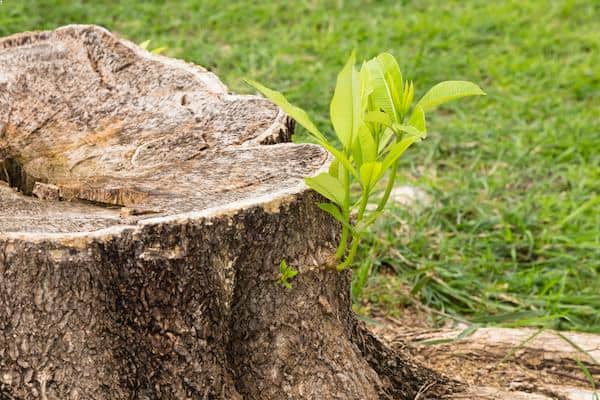Resiliency
Imagine a tree stump with a small sapling growing up from it. You’ll notice that this tree was chopped down, only to “bounce back” by re-sprouting new leaves! This tree cannot be kept down. It is the model of Resiliency.
Why can some people smile through failure? Come through heartbreak stronger than ever? How can I do that? CAN I do that?? Yes, you can. It is a teachable skill . . . a habit to be practiced. We’ve all seen this person . . . the one that falls down then gets right back up and tries again — seemingly unaffected by the fall. This person is resilient; their ability to ‘bounce back’ is tried and true.
Some people are just born with it. Others have to train themselves to overcome adversity. And like everything else, there are countless shades of gray in between.
Thankfully, if you have a difficult time bouncing back, resilience can be taught! In other words, you can learn it by practicing it.
The habit of resiliency
When you need to build resilience, approach it as a healthy habit to replace the unhealthy habit of ‘giving up.’
First, you must mindfully face the truth of where you are at; ideally using a mindfulness practice where you learn to strip away the judgment of yourself not being as resilient as you’d like.
Next, begin to notice opportunities to practice resilience. Begin with easy examples like not letting the stapler being empty throw you off too much. Then build up to more and more challenging situations. Take your time . . . it takes longer for some folks–this is ok, we are all just different on our learning curves.
Once you have practiced the basics of bouncing back, begin to notice where your blind spots are. These are places that you may not notice until after you are past the situation looking back. This is great because it lets you observe without having to act just yet. Just consider what being resilient would have looked like:
- What would your thoughts be if you were being more resilient (Cognition)?
- How would you have behaved differently (Behaviors)?
- What would the outcome be (Consequence)?
- What would the payoff have been (Reward)?
In parentheses, I put the Cognitive-Behavioral terms to help you see what we are doing here.
The more you repeat this, the better you will get, the better you get, the easier it will be to use the skills.
Start with one week of practice, then jot down what you notice. Then do another week. Then another. You will see improvements along the way, and around one month, you will likely notice that things are becoming more automatic!
Learn more about Stress Management Counseling in Austin.
Jonathan F. Anderson, LPC-s has worked in the helping profession since he started college in 1990. After completing his Bachelor’s degree at the University of Texas, Austin in 1994, he attended the highly-regarded University of Minnesota to earn his Master’s degree in 1997. He is a Licensed Professional Counselor and is recognized as a Board Approved Supervisor by the State of Texas Board of Examiners of Professional Counselors. Jonathan has completed Level-2 of the Gottman Method of Couples Counseling, and in 1998 received training by the International Critical Incident Stress Foundation in Advanced Critical Incident Stress Management & Debriefing. To learn more about Jonathan’s practice, click here: Jonathan F. Anderson, LPC-s.



